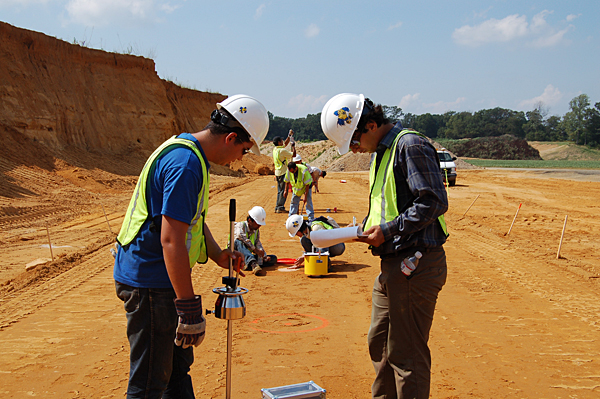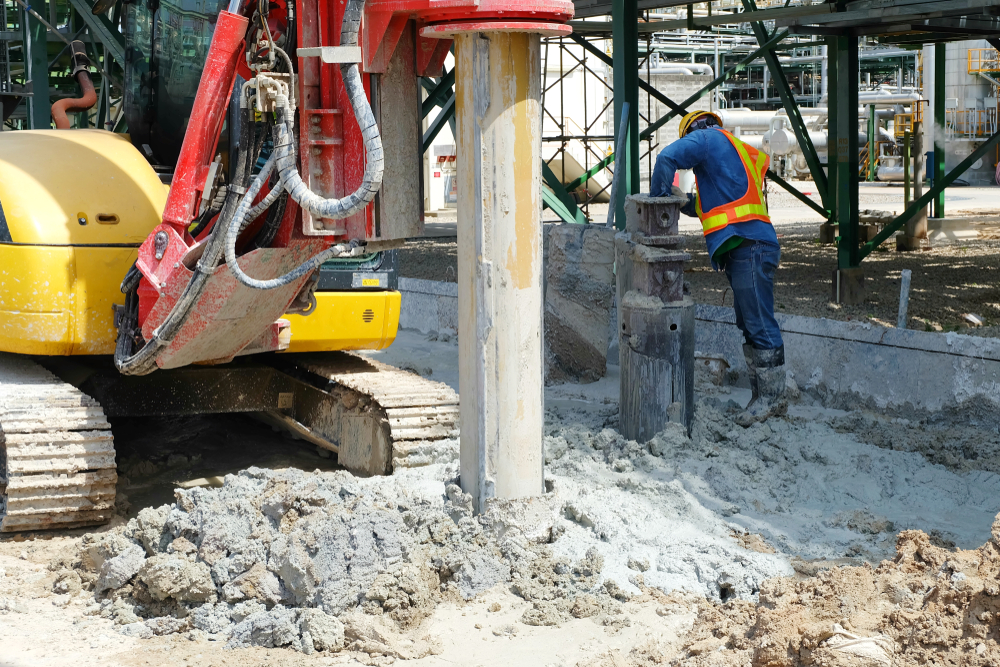Just How a Proficient Tailings Engineer Can Enhance Your Mining Procedures
Wiki Article
The Interdisciplinary Approaches in the Geotechnical Market: Linking the Void Between Engineering, Geology, and Environmental Science for Ideal Task End Results
The integration of design, geology, and ecological science within the geotechnical industry is not just useful; it is imperative for achieving ideal job results. This interdisciplinary cooperation promotes a detailed understanding of complex site problems, permitting innovative options to emerge. By checking out crucial roles and successful study, we can uncover the vibrant interplay that drives task success. Nonetheless, difficulties continue to be in efficiently managing these multidisciplinary efforts, questioning about future fads and potential developments. What strategies might emerge to facilitate this crucial partnership and enhance the efficiency of geotechnical practices?Importance of Interdisciplinary Cooperation
The value of interdisciplinary partnership in the geotechnical sector can not be overemphasized. Effective geotechnical projects call for the assimilation of diverse know-how from different fields, consisting of design, geology, and environmental science. This collaboration guarantees that all aspects of a job are thought about, resulting in comprehensive solutions that address complex obstacles.Interdisciplinary partnership cultivates advancement by making it possible for experts to share insights and methods that may not be apparent when operating in seclusion (consulting engineer). By leveraging the strengths of several self-controls, groups can recognize prospective risks, enhance style procedures, and enhance the sustainability of geotechnical jobs. Such partnership advertises a holistic understanding of site-specific problems, which is vital for accurate analysis and decision-making.
The complexity of geotechnical projects necessitates a collaborated strategy to problem-solving. Eventually, interdisciplinary collaboration is necessary for advancing finest techniques and achieving quality in the geotechnical market.
Trick Functions of Each Technique
Collaboration amongst numerous disciplines is not simply useful; it is vital for the successful implementation of geotechnical projects. Each technique-- design, geology, and ecological science-- plays a distinctive yet interconnected duty that adds to project efficacy and sustainability.Geotechnical designers are largely liable for creating foundations and making certain architectural honesty. They analyze dirt and rock residential or commercial properties to analyze load-bearing capacities, providing vital information for safe building and construction techniques. Their know-how enables the formula of ingenious services to complicated obstacles.

Environmental scientists assess the potential effects of building on communities and water resources. They perform ecological evaluations and establish reduction approaches to minimize damaging effects. By integrating eco-friendly factors to consider, they guarantee conformity with laws and advertise sustainability throughout the task lifecycle.
Case Researches of Successful Assimilation
Successful integration of geotechnical techniques can be exhibited via different instance research studies that highlight the effectiveness of synergy in resolving intricate engineering challenges. One significant instance is the construction of the Hong Kong-- Zhuhai-- Macau Bridge, where a collaborative strategy involving geotechnical engineering, geology, and environmental scientific research was vital. Rock hounds and engineers functioned in unison to analyze the seabed problems and maximize the foundation design, making certain security and reducing environmental effect.An additional impactful situation is the enhancement of incline stability in the San Francisco Bay Area, where an interdisciplinary group combined geotechnical evaluation with environmental analyses. By incorporating geological studies and hydrological researches, the team effectively determined prospective landslide risks and executed effective reduction measures, improving security and sustainability.
Furthermore, the redevelopment of Brownfield sites usually calls for a multidisciplinary method. In one instance in Chicago, cooperation among geotechnical engineers, environmental scientists, and urban planners resulted in the effective remediation of polluted soil, enabling the secure change of the site into a community park. These study highlight that interdisciplinary collaboration not only addresses technical challenges however also promotes ingenious options that profit both jobs and areas.
Difficulties in Multidisciplinary Projects

Furthermore, working with timetables and workflows among different teams can be troublesome, specifically when each discipline has distinct project engineer of record landmarks and deliverables. This misalignment can result in hold-ups and enhanced prices. The obstacle of resource allocation likewise impends big; ensuring that specialized competence is readily available at important points needs mindful preparation and insight.
Last but not least, regulatory compliance positions one more significant challenge. Each discipline may face various regulatory structures, and lining up these needs to meet job purposes can be complicated and taxing. Resolving these challenges demands strong leadership and effective interaction methods to foster cooperation and make sure that multidisciplinary teams function cohesively in the direction of shared goals.
Future Trends in Geotechnical Practices
As the geotechnical market progresses, arising patterns are improving techniques to address the difficulties faced in multidisciplinary projects - geo tech engineer. One substantial trend is the increased assimilation of sophisticated technologies, such as fabricated knowledge and equipment understanding, right into geotechnical evaluation and layout. These modern technologies boost anticipating modeling and danger evaluation, enabling designers to make more informed choices throughout the task lifecycle
Furthermore, the fostering of electronic twins and real-time surveillance systems is coming to be more prevalent. These tools assist in ongoing analysis of soil problems and structural performance, permitting timely interventions when issues arise.
Conclusion
In final thought, the integration of design, geology, and environmental scientific research is vital for accomplishing optimum results in the geotechnical market. Successful case research studies show the benefits of this approach, while recognizing the challenges dealt with in multidisciplinary jobs.The assimilation of engineering, geology, and ecological science within the geotechnical industry is not merely advantageous; it is crucial for achieving optimal job end results. Efficient geotechnical tasks need the assimilation of varied know-how from various areas, including engineering, geology, and environmental scientific research.Browsing the intricacies of multidisciplinary jobs in the geotechnical industry provides a number of significant difficulties.As the geotechnical market advances, emerging patterns are improving practices to attend to the obstacles faced in multidisciplinary projects. Geotechnical engineers are increasingly teaming up with ecological researchers to make certain that jobs line up with sustainability goals and conform with regulative needs.
Report this wiki page